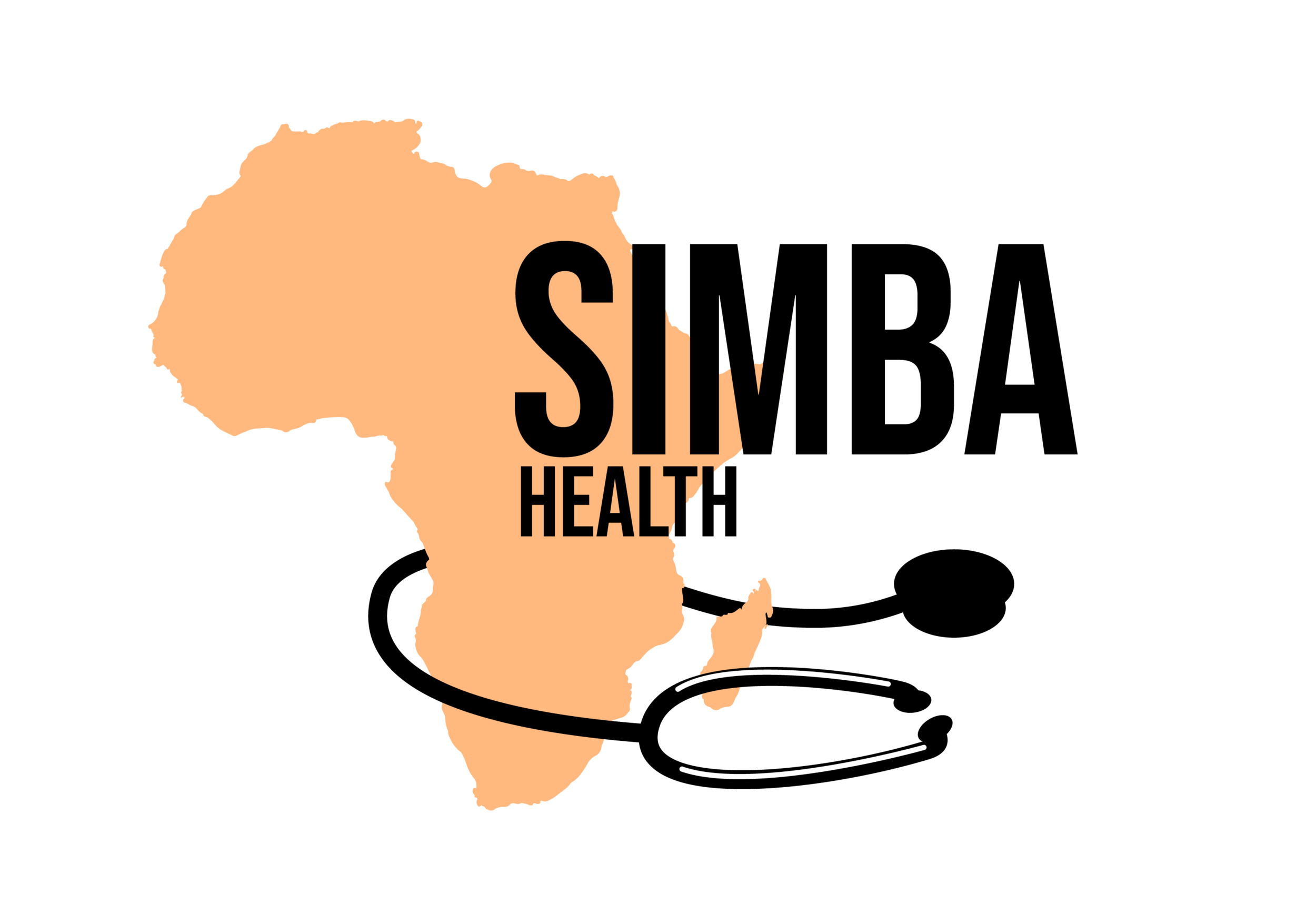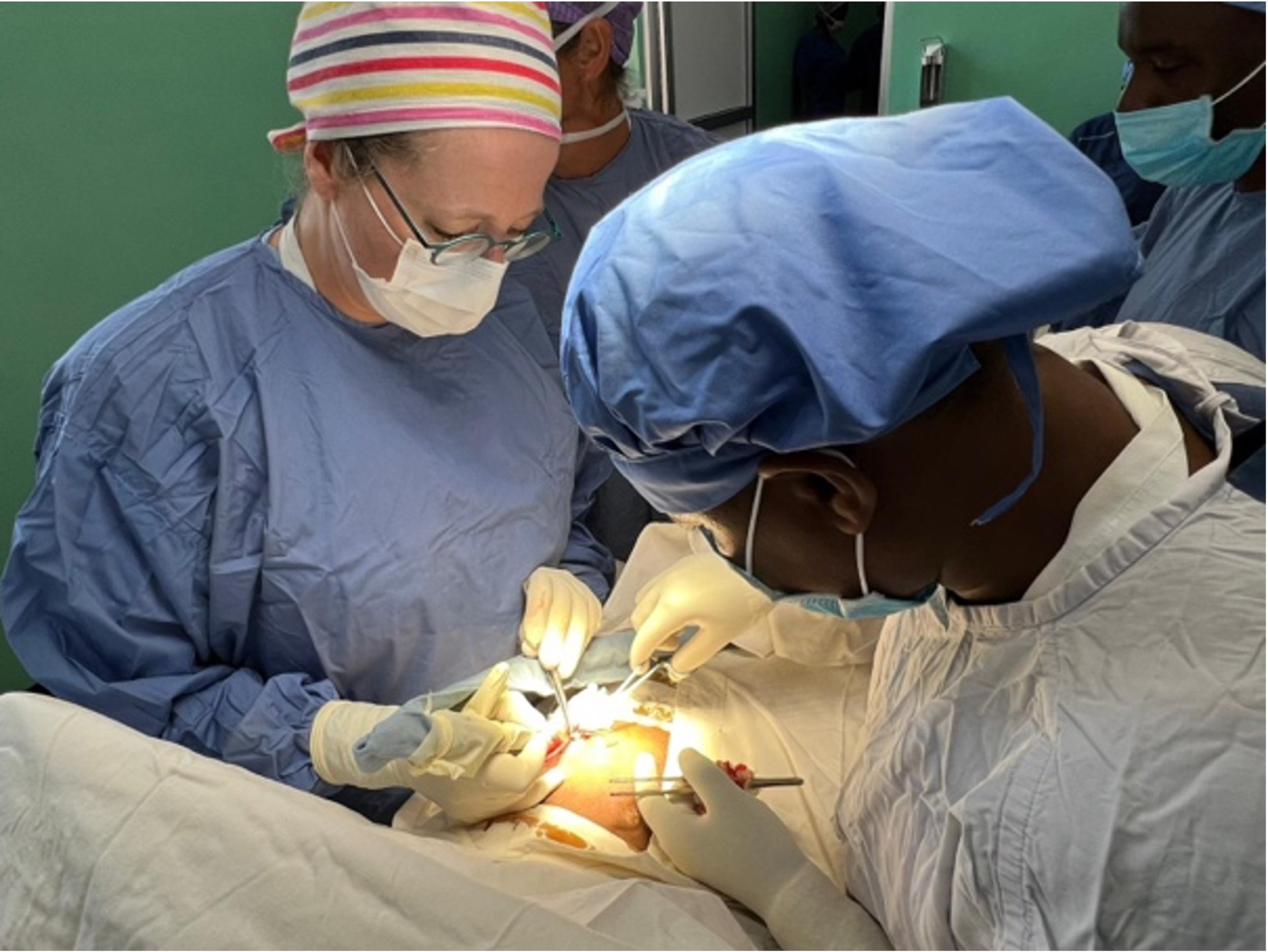Outreach September - October 2022
Crossing the Bridge
In February, Erik and Jiska left for Tanzania to live and work there for most of the year. They divide their activities between Sengerema Designated District Hospital, where the broadcasts have been taking place for years, and St Clares Hospital in Mwanza. The latter is a new hospital built by a German urologist. With German thoroughness but still with shortcomings. To materials and to surgeons. And there is a great need for cooperation, so Erik and Jiska basically work there every Thursday and Friday.
After Erik and Jiska had settled in a bit, a team departed from the Slingeland Hospital in Doetinchem in September for the first “new style” broadcast: not only actual patient care, but also education and training for local employees to make permanent improvements. make in the next five years.
The paperwork to register us as doctors hadn't gotten any easier. Now your doctor's diploma first had to be recognized before you could apply for a work permit. And although we were now able to upload everything from the Netherlands, the lead time was long. So long that we finally got the permit on the way back.
With filled suitcases and in good spirits we set off: Alja Buseman (surgery assistant), Jan Ammann (anaesthetist) and Susan Lemson (surgeon). Despite (or perhaps because of) all the Indian stories about queues, Schiphol was not too bad, but unfortunately Precision Air had canceled our domestic flight. The email about this was sent when we were already on the plane. After some talking back and forth, we were able to continue with a delay of half a day and we finally landed in Mwanza at dusk, where after 8 months it was a warm reunion with colleague Erik. Traveling after dark is not safe, so we stayed the first night in Mwanza. The next day we had to get up early to catch the first ferry to Sengerema.
Once there, an inspection of the new container house followed, which has been built and furnished in recent years, partly thanks to special collection campaigns and online "sales" of household effects via SimbaHealth. But then we had to get to work because there were patients waiting for us.
Alja was in Tanzania for the first time and was amazed. With a broad gray she called everyone “habari” (a kind of “how are you”) and after the first meeting she immediately got to work. Operations assistant Happy received tips on how best to cover your table with instruments so that you have everything you need clearly at hand. That was the start of a series of lessons in instrumentation. In the two weeks we were there, with Jiska as interpreter, Alja explained how to keep the sterile field sterile, good washing instructions, instrument theory and how best to declare the instruments. Do not “just” stop so that the surgeon has to look to grab the instrument, but place it with a firm tap in the hand, so that the surgeon immediately holds the instrument correctly unseen and can immediately continue working. Well, that was noticeable. Susan looked surprised when she got the scissors in her hand during the next procedure and pretended that her hand hurt. The whole team was in a dent.
In addition to teaching, Alja has the operation nets in which the instruments are sterilised, selected and supplemented for each procedure. She also worked through the old storage and conjured up useful items that can be used during interventions. And we said goodbye to things that really can no longer be used. During our stay a new storage was built. This was badly needed because in recent years the office of Steven, the head of the OR, had gradually been occupied by things that were well-intentioned but cluttered.
In addition, Alja also had a generous gift for the poor fund, which she had collected with her sponsored run in the Netherlands. Thanks to this donation, 82 children can be helped with leg correction in the coming year, so that they can build a full life.
Surgery is only possible if the patient cannot perceive pain. That is why good anesthesiological care is of great importance. The WHO has issued a guideline as a guideline for working safely in low-income countries. Jan asked the anesthetists what is needed to optimize this in Sengerema. In the weekend he wrote a step-by-step plan that he presented to the men in the second week. The plan was enthusiastically received and offers good tools for improving care. By also sharing it with the Dutch anesthesia colleagues who will join in subsequent broadcasts, uniform supervision is guaranteed and targeted education can be planned.
In addition to setting up this plan, Jan was of course also there for the direct anesthesiological care around the procedures that were performed in the two weeks. During the interventions, he gave tips to current local staff members and supported their new colleagues with advice and action. In addition to a suitcase full of equipment for anaesthesiological care, he had also brought an oxygen meter for all employees. In the Netherlands during the corona pandemic, many "laymen" simply ordered online, but often not available in Tanzania and essential to check whether the patient who is asleep also receives enough oxygen.
Another important area where a lot of profit can easily be made in low-income countries is wound care. The starting point is a uniform description of the condition of the wound and the wound edges according to the international TIME principle. This standardized description provides clear guidelines for providing the right wound treatment at the right time. Susan taught both in St Clares and Sengerema about this TIME report and the subsequent steps in wound treatment, with an eye for locally available resources. In Sengerema, even gauze and ordinary bandages are scarce. Fortunately, we had a shopping bag full with us so that they could go ahead again.
Clear posters were made to hang in the treatment rooms so that the TIME method can be applied in an accessible manner. In addition to education in wound care, reporting in the file in the coming broadcasts still deserves attention. Improving this will make it easier to monitor wound healing over time and, if necessary, adjust wound care in time so that the wound may heal more quickly.
In addition to teaching, there was of course surgery. These operations were also largely dominated by knowledge transfer. To the two Dutch tropical doctors-in-training who are doing their final internship in Sengerema and gratefully took advantage of the opportunity. And to the Tanzanian medical officers who involved us in the care of their patients on the ward and tried to participate in the interventions as much as possible in addition to their daily work. In between the operations they asked us all about the how and why of the operations.
Among other things, enlarged thyroid glands and other swellings in the neck were removed, crooked legs were straightened, old bone fractures were fixed, stomas were lifted, and in the first weekend we met Brighton, a very sick 7-year-old boy who had an intestinal perforation with severe peritonitis due to typhoid fever. turned out to have. We removed the diseased piece of intestine, created a stoma and rinsed the abdomen. He was severely malnourished, probably because the typhus had been simmering for a while before it had caused the intestinal perforation. We were concerned if he would make it. His illness ran like a red thread through the broadcast. The day started and ended with a visit to him in the Intensive Care Unit where his parents and grandmother alternated faithfully at the bedside and carried out all our instructions as best as possible. In the end he underwent 3 operations and the day after we returned home a picture showed that he could eat some porridge again for the first time. And after two weeks he was sitting happily smiling next to his mother in the regular children's ward. With a stoma, which is not very handy in Tanzania, as there is hardly any stoma material such as bags available. Fortunately, we also had a few boxes with us, collected by the stoma nurses and by friends and acquaintances around us who know about our broadcasts. And in a few months, when he has recovered and the abdominal wounds have healed properly, Erik can replace the stoma.
They were also happy with our arrival in St Clare's. Although there is a beautiful clinic, certainly by Tanzanian standards, the influx of patients is still limited. It is a pity that those beautiful facilities such as the operating rooms are not used optimally. Thanks to the poor fund of both hospitals, a number of patients who could not yet be helped in Sengerema due to the overload of the system, could now be operated on in St Clares.
The checks before the start of an operation are well structured in St Clare's. So after verifying the patient's identity and planned surgery, the anesthetist asked the patient if he had anything to add. He had that: he wanted to take a picture with the team! Brilliant! That has really changed in recent years. Thanks to the providers who have turned it into a smart earning model, many Tanzanians have a smartphone. With photo function. They no longer look up when you want to take a picture. And they regularly take pictures of us, preferably a "sampie".
We have tried with great pleasure to contribute to the construction of the bridge between the Netherlands and Sengerema in order to take local care to a higher level with education and resources. With pain in our hearts but full of good plans to work out further we return home. Because:











